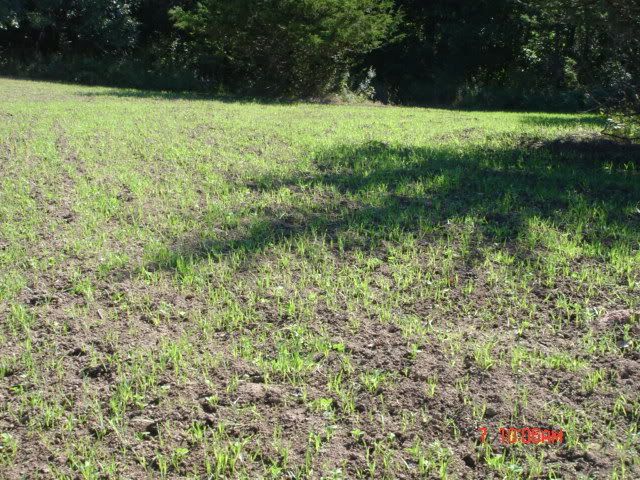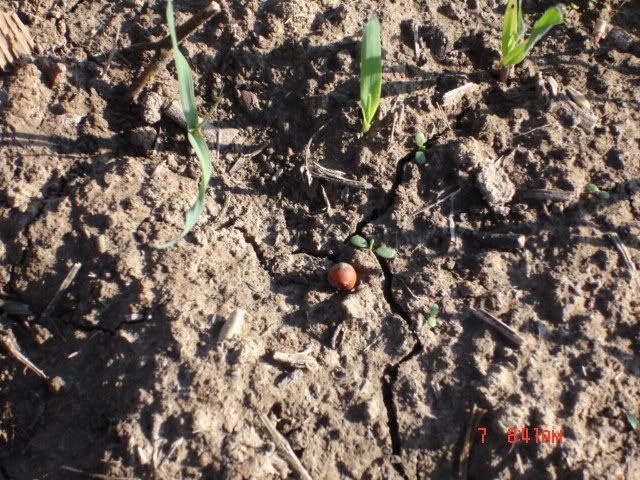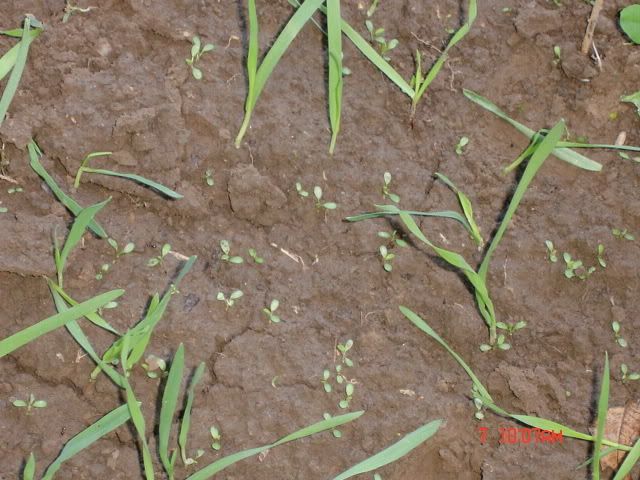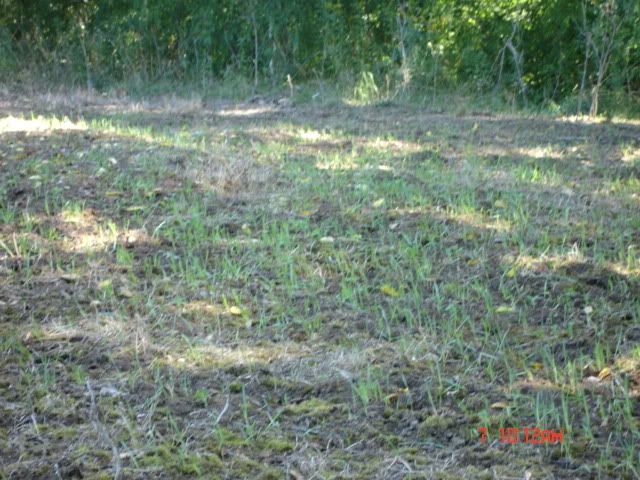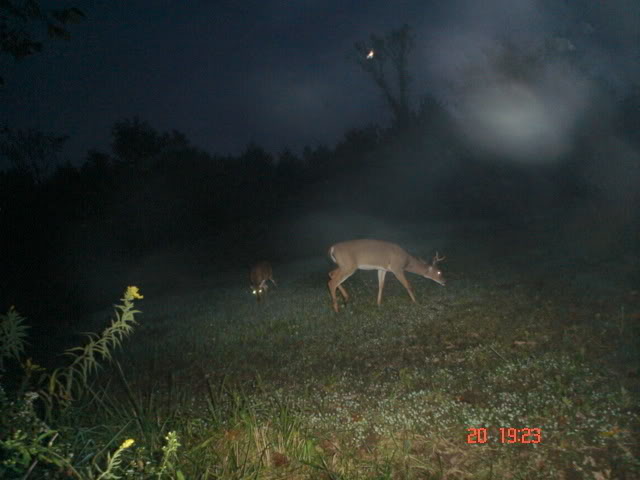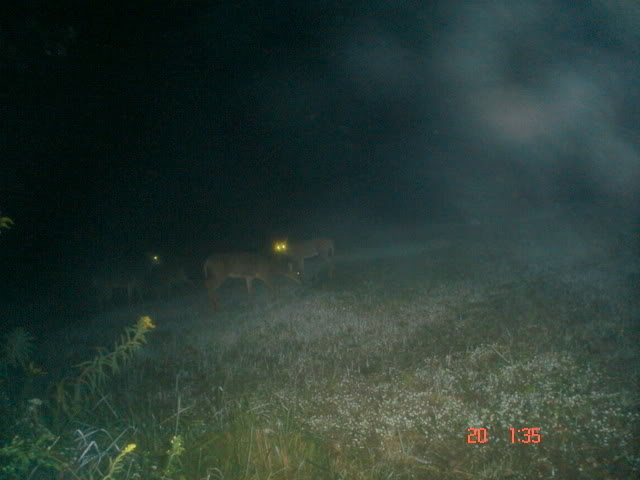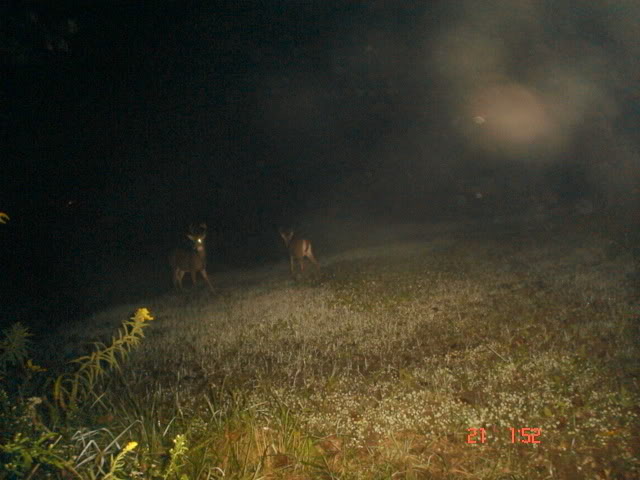Re: Cereal Grains - Oats r Oats
and the
plot thickens in the "oat tests"
sorry I couldn't resist....

When we don't plant seeds/crops/varieties side by side it is really difficult to say pro or con and in the case for or against expensive oats such as BFO or ordinary spring oats I wondered after planting them...
What if the BFO are just outstanding? What if they are just sooo lush and green and deer flock to them and ignore the others? After all if you read the back of the bag they pretty much tell you as much (like most all brand name varieties)
At any rate I have to admit being very curious and I felt sure that the expensive BFO would be at least as good or appear slightly better then the Jerry oats.......boy was I in for a surprise!
This view shows a field with 4 strips of oats...BFO, Jerry, BFO and Jerry. Note that the Jerry is very very green and lush while the BFO is..well...not.....
This is the opposite end of the field showing forage oats and field peas on the far left, BFO then the dark green Jerry oats in the center.
Another view showing Jerry in the middle and very far left
Now, I'm not advocating Jerry oats, I would rather have a forage oat such as the ones I got from nannyslayer last spring or Frank Forage oats from Welters but no matter...they are ALL available at a very reasonable price ranging from 8 to 12 bucks for 50#'s versus $35 for the BFO.I had some left over buckwheat so I threw that in one area just to see what it did...growing at least...
Clover alfalfa, Forage oats and peas and oat test plots just so you can see a variety of feed including three different varieties of oats.
Grazed Jerry oats
Heavy grazing in the common feed oats (Jerry in this case) shows that even with expensive oats and other types of feed right beside them...they can't resist tasty succulent tender oats...of any kind!
I set up exclusion cages 9-21 to see if we can tell anything from that in a month.
BFO exclusion cage
Jerry exclusion cage
I top dressed with fertilizer 9-21 in strips cross ways with a high N fertilizer as it was thundering and spitting rain but it never did rain so it may be for naught. The oats look great without fertilizer but just curious and as always..."testing"
This is a completely different plot...Jerry on the left, BFO on Right and both heavily fertilized and the fertilizer tilled in.
Jerry left, BFO Right...you decide which one looks more attractive...

What about time of planting?
These pics show oats planted at different times just to give you an idea when to plant to have tender oats during hunting season. These oats were not "planted" but tilled under spring oats that re-sprouted when I planted brassicas August 1st
I stuck my bag seeder in them to give a better idea
These are oats planted in mid August (again largely tilled under forage oats from this spring) to plant my field peas.
So we have oats planted anywhere that are now 4, 6 and 8 weeks old and all are being grazed heavily. The older oats may become a little rank by mid October so we will keep an eye on those. The skies were threatening and promising some rain so I decided to top dress some fertilizer on parts of the oat plots and broadcast my fresh rye seed
The rye seed I had planting was 3 years old completely worthless and not a single seed germinated. My seed dealer replaced it with fresh rye seed harvested this summer so I broadcasted it back over the areas I originally seeded.
Plenty of soil moisture but I nice drencher would be helpful...
Soil seed contact is easy at this point but we are looking at a stretch of pretty dry weather. As I was seeding one plot....it rained on the other (before I seeded it of course... )but hopefully it will eventually germinate and get going.
Plenty of time for planting grains if you have some drowned out areas or just have not got around to it. Broadcast some rye into standing corn or soybeans that are staring to drop leaves, inexpensive way to add some green feed...
As for the oats, at this point I am actually disappointed with the BFO oats. Deer are mowing the Jerry oats and I cannot blame them since they are so lush and bright green. The whole thing with BFO is that they supposedly will last longer into cold weather but adding winter rye to the mix insures that we will have green feed all winter long for a very reasonable costs per acre.
I will keep sharing pics and results as fall and winter progresses...




